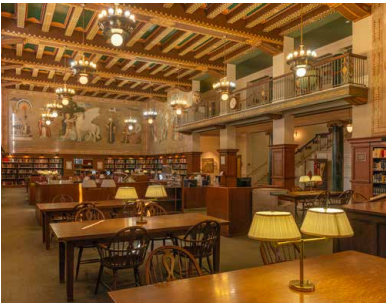Well-informed advocacy will be needed to ensure that these public resources remain available beyond our collective recovery from the pandemic.
This peril became evident in late summer as two very fine research centers at the Birmingham Public Library—the Department of Archives and Manuscripts (DAM) and the Southern History Department (SHD)—faced the prospect of a complete shutdown amidst a revenue shortfall of $63 million in the City of Birmingham. The city’s initial plan for addressing the budget crisis would have furloughed indefinitely nearly the entire staff of the public library system. The doors of the DAM and SHD would have been locked and the collections left unmonitored for an unknown duration.
The closure would have ended completely the public services that had continued by telephone and email during the pandemic. Records requests needed for economic development, for documentaries on Birmingham history, and for genealogy would have gone unanswered. Of potentially greater long-term harm, the unique holdings of both departments would have been unmonitored for water and pest intrusion, improper temperature and humidity, and other security breaches. The integrity of archival and special collections can be compromised quickly in the absence of continuous, professional management. The neglect of collections rightly causes alarm among past and prospective donors of materials and erodes public confidence in an institution.
News of the anticipated closures spurred two sets of responses with significant effect. Local history organizations, genealogists, and donors expressed their concerns in communications to the Office of the Mayor, the Birmingham City Council, and the Birmingham Public Library Board of Trustees. In late August, six statewide organizations issued a joint statement calling on the city and the library board to maintain a presence of experienced staff at the DAM and SHD throughout the budget crisis, and to prioritize the redevelopment of staff and facilities maintenance at the conclusion of the crisis. A link to the statement can be found at www.archives.alabama.gov.
Following a month of jockeying by the municipal offices involved, in late September the library board implemented a plan under which 75 percent of library-system employees were furloughed. The DAM and SHD received staff reductions roughly proportional to those of the entire system, leaving one person in each department to manage the collections and to provide public access as best they can. Although the plan causes significant setbacks for units with proud legacies of public service, it does provide a minimal level of professional, ongoing stewardship of the collections, which was a key concern of our advocacy network.
The need for public engagement on the Birmingham crisis is by no means concluded. The recovery of city finances is likely to span multiple fiscal years during which important decisions will be made about resource allocation. It will be important for supporters of history to weigh in next spring as the mayor develops a proposed FY 2021 budget, in the summer as the city council makes decisions on appropriations, and into the fall as the library board allocates those appropriations across system operations. Regaining lost ground rarely happens quickly; if it is to occur at all, sustained engagement will be needed.
Now is the time for other communities to learn from this episode. Birmingham felt the effects of the pandemic early because it relies heavily on lodging- and sales-tax revenue generated by conventions, tourism, and workplace commuters. The effects may be delayed or less dramatic in other cities, but they are likely to develop if Congress does not pass a relief package that provides revenue replacement.
Supporters of history can help mitigate the damage to repositories by taking steps now to become effective history advocates in your communities.
1. Become informed about the funding mechanisms used to operate your local archives or genealogy library. Who provides funding for staff, utilities, and security? Does the institution pay rent or receive use of a building owned by a different entity? Is there an operations reserve or a friends organization that can help during a crisis?
2. Determine which members of the city council, county commission, or governing board have a personal interest in history or genealogy. Build a relationship and cultivate them as advocates through tours and personal testimony to the importance of the repository.
3. Develop a succinct statement of ways the repository serves the community. What collections does it hold that are unique and therefore irreplaceable? Do local K-12 educators use its resources in the classroom or on field trips? How does it contribute to the community’s identity and to promoting the area for economic development and tourism?
4. Be prepared to articulate the consequences of funding cuts for public services and the integrity of collections. In a worst-case scenario involving total closure, insist that arrangements be made for trained volunteers or another repository to provide oversight of the collections until a permanent solution for their preservation can be found.
5. Remain involved and promote the restoration of resources when circumstances permit. Many areas of need will have voices at the table; those that are unrepresented are unlikely to see any growth in support.
The situation at the Birmingham Public Library has drawn the attention of national organizations including the Society of American Archivists (SAA) and the American Library Association. Anticipating similar developments in other local institutions, the SAA’s Committee on Public Policy has begun crafting a new advocacy toolkit to address acute crises in staffing and funding that can be caused by the pandemic. When the toolkit is available, the Alabama archival community will promote it broadly to community supporters of history.
Look for this new resource, but do not wait on it before beginning preparations. The most valuable advocacy tool is a heartfelt statement of why an institution and its collections matter to you. Readers of Alabama Heritage are well equipped to make such statements and to help carry the day when needed.
